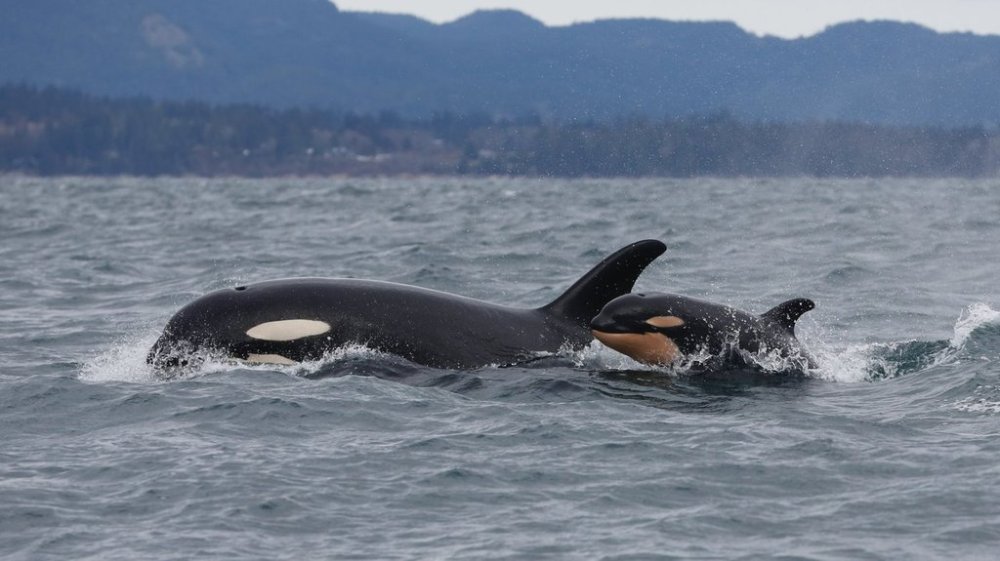Science
Southern Resident Killer Whales Face Gradual Decline, Experts Warn

A recent survey has revealed troubling signs for the endangered southern resident killer whales, indicating a gradual decline in their population. According to Michael Weiss, a director with the Center for Whale Research, immediate action is necessary to prevent their potential extinction. The survey confirms that, without stronger protective measures, these whales are on a plateau that could lead to their disappearance.
The southern resident killer whales, which inhabit the waters off the coast of Washington State and British Columbia, are facing numerous challenges. Weiss points to the decreasing population of chinook salmon, pollution, and increasing noise from ships as major factors contributing to their decline. He stated, “We’re not talking about southern residents going extinct in the next five years, but we are talking about a fairly good chance of at least one of the (three) pods being gone within the next 50 years.”
Population Status and Challenges
The annual survey released on October 13, 2025, provided a snapshot of the southern resident population as of July 1. This year, the overall population stands at 74, up by one from the previous year. Notably, researchers recorded four births across all three distinct pods, but only two calves survived. The loss of an adult male, known as K26, is particularly concerning. Weiss described K26 as a “huge loss” for the population, as the southern residents already suffer from low genetic diversity.
The issue of inbreeding is critical. Weiss noted that the population is “very inbred,” which likely affects their resilience to diseases. Among the 27 males of reproductive age, only a small number are successfully breeding. The youngest confirmed male to have reproduced was just 15, while Weiss considers the prime reproductive age for these whales to be in their early twenties. The loss of K26, the oldest male in its pod, further compounds the issue.
Female southern residents are reproducing at half the rate of their northern counterparts, with high mortality rates among calves. “Mortality among calves is around 50 percent in the first year of life,” Weiss explained. If these trends persist, the population will continue to decline.
Pod Dynamics and Future Prospects
The K pod is in particularly dire straits, with just 14 members, marking the lowest count in the survey’s 50-year history. Weiss remarked, “What’s really concerning about K pod is they’re just not reproducing.” The last successful birth in K pod occurred in 2022, and prior to that, there had been a decade-long gap without a new calf.
In contrast, the J pod appears to be faring better, experiencing a low mortality rate among adults in recent years. Yet, the overall situation remains precarious. The survey also highlighted that only 11 immature whales under the age of 10 constitute just 15 percent of the southern resident population. In comparison, immature orcas make up 47 percent of the northern resident population, which is currently growing.
Weiss emphasized the unique challenges faced by the southern residents. They rely heavily on chinook salmon, a species that has seen a decline. These orcas often find themselves competing for resources, as they typically get “the last crack” at salmon migrating from northern waters to coastal rivers.
The urbanized habitat of the southern residents further complicates their survival. Weiss pointed out that they are attempting to hunt in areas heavily trafficked by cruise ships and freighters, likening their situation to “trying to find food on a highway.”
To support the recovery of southern resident killer whales, Weiss suggests that restoring salmon habitats and relocating chinook fisheries away from ocean waters could be effective strategies. “If you’re fishing out in the ocean where everything’s mixed up, it’s really hard to avoid taking fish from these declining populations,” he noted.
Without decisive action, the future of the southern resident killer whales looks increasingly uncertain. Experts are calling for a renewed commitment to conservation efforts to ensure their survival.
-

 Science3 months ago
Science3 months agoToyoake City Proposes Daily Two-Hour Smartphone Use Limit
-

 Health4 months ago
Health4 months agoB.C. Review Reveals Urgent Need for Rare-Disease Drug Reforms
-

 Top Stories4 months ago
Top Stories4 months agoPedestrian Fatally Injured in Esquimalt Collision on August 14
-

 Technology3 months ago
Technology3 months agoDark Adventure Game “Bye Sweet Carole” Set for October Release
-

 World3 months ago
World3 months agoJimmy Lai’s Defense Challenges Charges Under National Security Law
-

 Lifestyle4 months ago
Lifestyle4 months agoVictoria’s Pop-Up Shop Shines Light on B.C.’s Wolf Cull
-

 Technology3 months ago
Technology3 months agoKonami Revives Iconic Metal Gear Solid Delta Ahead of Release
-

 Technology3 months ago
Technology3 months agoApple Expands Self-Service Repair Program to Canada
-

 Technology3 months ago
Technology3 months agoSnapmaker U1 Color 3D Printer Redefines Speed and Sustainability
-

 Technology3 months ago
Technology3 months agoAION Folding Knife: Redefining EDC Design with Premium Materials
-

 Technology4 months ago
Technology4 months agoSolve Today’s Wordle Challenge: Hints and Answer for August 19
-

 Business4 months ago
Business4 months agoGordon Murray Automotive Unveils S1 LM and Le Mans GTR at Monterey









